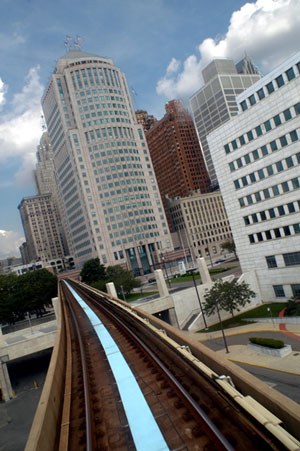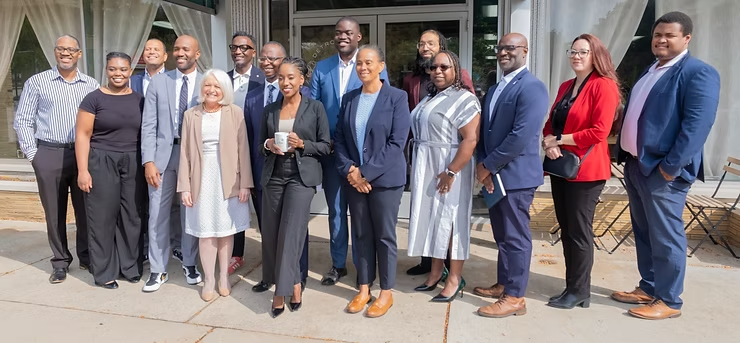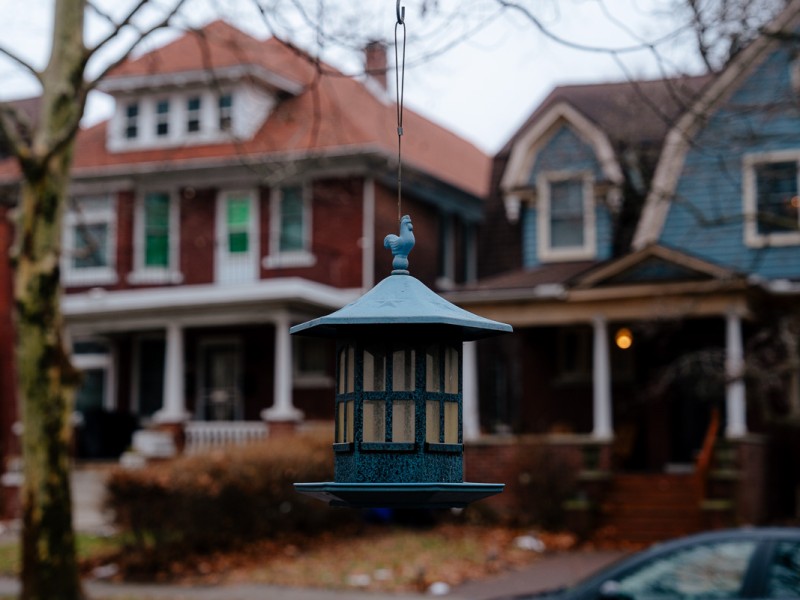Time for Transit = Now
Why can’t metro Detroiters shuttle around on General-Motors-made electric buses (Seattle bought a bunch) to and from work, to and from restaurants and bars, to and from the hospital, saving on air quality and decreasing unemployment? Detroit is late on mass transit. But it’s never too late to jump on the national bandwagon, say proponents of mass transit.
Thirty-six years ago, the Colorado General Assembly created the Regional Transportation District, which now serves 2.5 million people in an eight-county region surrounding Denver. Since then, the district has benefited not only from local taxes—including a voter-approved sales tax increase last year to fund a $4.7 billion light rail expansion — but also from hundreds of millions of dollars from the federal government. Today, the Denver transit system’s fleet of light rail trains, buses, vans and shuttles serves 285,000 riders a week and employs 2,300 people amid a vibrant and growing metropolitan economy.
Seattle, Atlanta and Los Angeles have, like Denver, expanded their public transit systems, and with the expansions they’ve seen an increase in riders and voter-approved funding measures – and millions of dollars in support from the federal government.
So, why can’t metro Detroiters shuttle around on General-Motors-made electric buses (Seattle bought a bunch) to and from work, to and from restaurants and bars, and to and from the hospital, saving air quality and decreasing unemployment?
Detroit is late, but it’s never too late to jump on the national bandwagon, say proponents of mass transit.
“Look at Chicago – a vibrant, dynamic, bustling, economically secure city. The city of Chicago has actually had a transportation planning department since the 1930s. They are 75 years ahead of us, and it shows,” says Paulette Chaplin, director of Transportation Riders United, a Detroit nonprofit lobbying for mass transit.
Ferndale City Manager Tom Barwin says it’s time for Detroit to jump in the transit game — now.
“Salt Lake City is a city of about a quarter million in a region of about 1.2 million, and it’s extremely Republican, Mormon and conservative. Last year, they just opened their third light rail line,” Barwin says. “It can be done. It’s just a matter of money and political will.”
 The lack of planning is costing Michigan millions in federal funding each year, Barwin says. The federal dollars are going to place like Denver, where the transit system allows its workers and elderly, car-less and party people to get around downtown, to the airport and elsewhere sans car could come to Detroit.
The lack of planning is costing Michigan millions in federal funding each year, Barwin says. The federal dollars are going to place like Denver, where the transit system allows its workers and elderly, car-less and party people to get around downtown, to the airport and elsewhere sans car could come to Detroit.
Detroit’s answer to transit, DARTA, which was created in 2003 with cooperation from the city and surrounding counties, was recently struck down in court as illegally formed. Even if revived, the agency boasts a total of one staff member and a $1 million budget, compared to Denver’s $330 million a year transit budget.
Barwin explains that three cents for every gallon of gasoline purchased goes to the federal government to be redistributed for mass transit programs. For years, Michigan residents have lost the about $100 million they pay into the fund because the area has had no plan to add light rail or improve its bus systems.
“Most people don’t know that they are already paying for it,” Barwin says. “Michigan transit money goes just about everywhere but here.”
At least some of that money could be headed back that way soon. The U.S. Senate recently approved a highway bill that included $100 million grant for a possible commuter rail line between Detroit and Ann Arbor.
The Southeastern Michigan Council of Governments has been looking at the feasibility of such a line since the 1990s. SEMCOG says the new grant would be used to fund an engineering study.
Chaplin of Transportation Riders United says the move is encouraging, but she and her group are still somewhat skeptical, waiting to see the details of how the money will be dispersed and SEMCOG’s plans to use the funds. “We’re saying, ‘Heck, that’s almost half the cost of a whole rail line,’ ” she says.
Plus, she says, Amtrak already services a Detroit to Ann Arbor route, and there are pressing transit issues closer to the city that need to be addressed, one of the biggest being the lack of public transit from downtown Detroit to the airport.
“It’s not like Chicago, or Washington, D.C., where you can take the Metro to the airport to your hotel downtown,” she says. “I can’t tell you how many times a week I get calls, ‘I am trying to get to the airport using public transportation.’ I say, ‘Well, if you leave now …’.”
For the love of motor in city
 There’s a perfectly good car sitting in Chaplin’s driveway in Hazel Park. Chaplin bypasses it every morning on her commute to work in downtown Detroit.
There’s a perfectly good car sitting in Chaplin’s driveway in Hazel Park. Chaplin bypasses it every morning on her commute to work in downtown Detroit.
Instead of joining the flood of drivers behind the wheels of their cars, SUVs and minivans trucking down I-75 every day, Chaplin takes a walk to the bus stop.
“I have a car, but I ride the bus every single day,” she says. “I think there is room for both. It doesn’t have to be either or.”
In a metro area of millions, she is one of the few people who choose to use public transit; most of Chaplin’s fellow bus passengers are there because they have no other choice, local public transit officials say.
The system just isn’t extensive or frequent enough to meet the needs of casual riders who have other options, says Beth Gibbons, spokesperson for SMART, the bus system that runs through the city and the suburbs.
“Given our funding and budget, our services are geared toward entry level workers, seniors and the disabled,” Gibbons says. “The best way we can serve people is to serve people who have no other way and need an alternative.”
SMART isn’t the only bus system in Detroit. The city also has its own bus system — albeit one that this year faced budget cuts, voluminous management and union problems, a bloated budget of $40 million a year and now facing scaled-back services — run by the Detroit Department of Transportation, as well as the People Mover elevated train.
Neither the buses nor the train are comprehensive or well coordinated, Chaplin says.
Compared with other city’s residents, metro Detroit residents lack knowledge and options when it comes to getting around, she says.
The options are scarce, public transit proponents say, because there hasn’t been a fair, regional plan or agency committed to expanding and improving mass transit in Southeastern Michigan.
Why not here?
Ask a metro Detroiter why there isn’t viable mass transit in the city and most will point to the Big Three automakers.
 “They assume it hasn’t happened, or it may not happen, because we are the Motor City,” Barwin says. Historically the automakers lobbied against transit and even pulled up rail lines in Detroit. But today they have indicated they support adding public transit to the city because of its potential economic impact on the region, Barwin says.
“They assume it hasn’t happened, or it may not happen, because we are the Motor City,” Barwin says. Historically the automakers lobbied against transit and even pulled up rail lines in Detroit. But today they have indicated they support adding public transit to the city because of its potential economic impact on the region, Barwin says.
Regardless, a historic unwillingness to cooperate between city and suburban leaders is a real impediment, he says. Racism and suburban flight have played a role – with mostly white suburbs not wanting city buses coming their way.
The race issue is big, Barwin says.
“There’s no doubt about it, we have to work through it,” he says.
As it stands now, local communities can opt out of funding and participating in SMART. Macomb County participation is compulsory countywide, but in Oakland and Wayne individual towns and cities can decline SMART services. A group of Livonia residents are working to withdraw the $2.7 million the city pays into SMART annually, saying the city has low ridership and doesn’t need the service.
Chaplin said that when cities pull out, it erodes the system and adds to the confusion of navigating bus routes.
Politicians who oppose expanding the public transit system say lack of demand is one reason the state doesn’t need to invest in adding services.
Brian O’Connell, chief of staff for state Sen. Shirley Johnson, R-Royal Oak, says the senator is in favor of public transit. She grew up riding buses in Chicago and is working with legislators to create a regional transit authority that is efficient and accountable for its state funding. But she doesn’t see a need to sink a lot of money into expanding the system, he says.
“When I go to Detroit, I see that there are a tremendous amount of empty buses,” O’Connell says. “I think you need to have demand for the system before you expand it. You need to fix your problems before you expand.”
What’s next
Sen. Buzz Thomas, D-Detroit, recently introduced legislation to bring DARTA back to life. Detroit Mayor Kwame Kilpatrick, as well as leaders from Wayne, Oakland and Macomb counties, say they’ll push for the bill.
Chaplin said she hopes DARTA’s demise doesn’t stall momentum surrounding the issue.
“I think that can be used as an excuse,” she says, adding that it could be years before the agency is up and running again. “Let’s do transit now.”
In the long run, a regional transit authority would make it easier for riders if it could offer one unified map of routes and one schedule to let riders easily figure how to get where they want to go, Gibbons of SMART says.
DARTA “had opened up the line of communication” between DDOT and SMART, and that will continue, she says.
As for SMART, Gibbons says the agency will keep striving to build on its recent gains. Ridership is up 25 percent over the past 3 years, with some months showing a 10 percent gain over the same month in the previous year, she said. That’s in part because of improvements to the system — including adding bike racks to buses, adding more buses and replacing old buses so that none in the fleet are over 3-years old, she says. SMART has also created a Web site with route maps, and redesigned routes to focus on getting people to work.
“We have some trips that are standing room only, which in some cities is viewed as a normal thing, but people here say, ‘I want my seat,” she says. “But that’s a good thing.”
Transportation Riders United: www.detroittransit.org/
City of Ferndale: www.ferndale-mi.com/
SMART: www.smartbus.org
DDOT: www.ci.detroit.mi.us/ddot/
State Sen. Buzz Thomas: www.detbuzz.com/
State Sen. Shirley Johnson: www.senate.michigan.gov/gop/senator/johnson/




